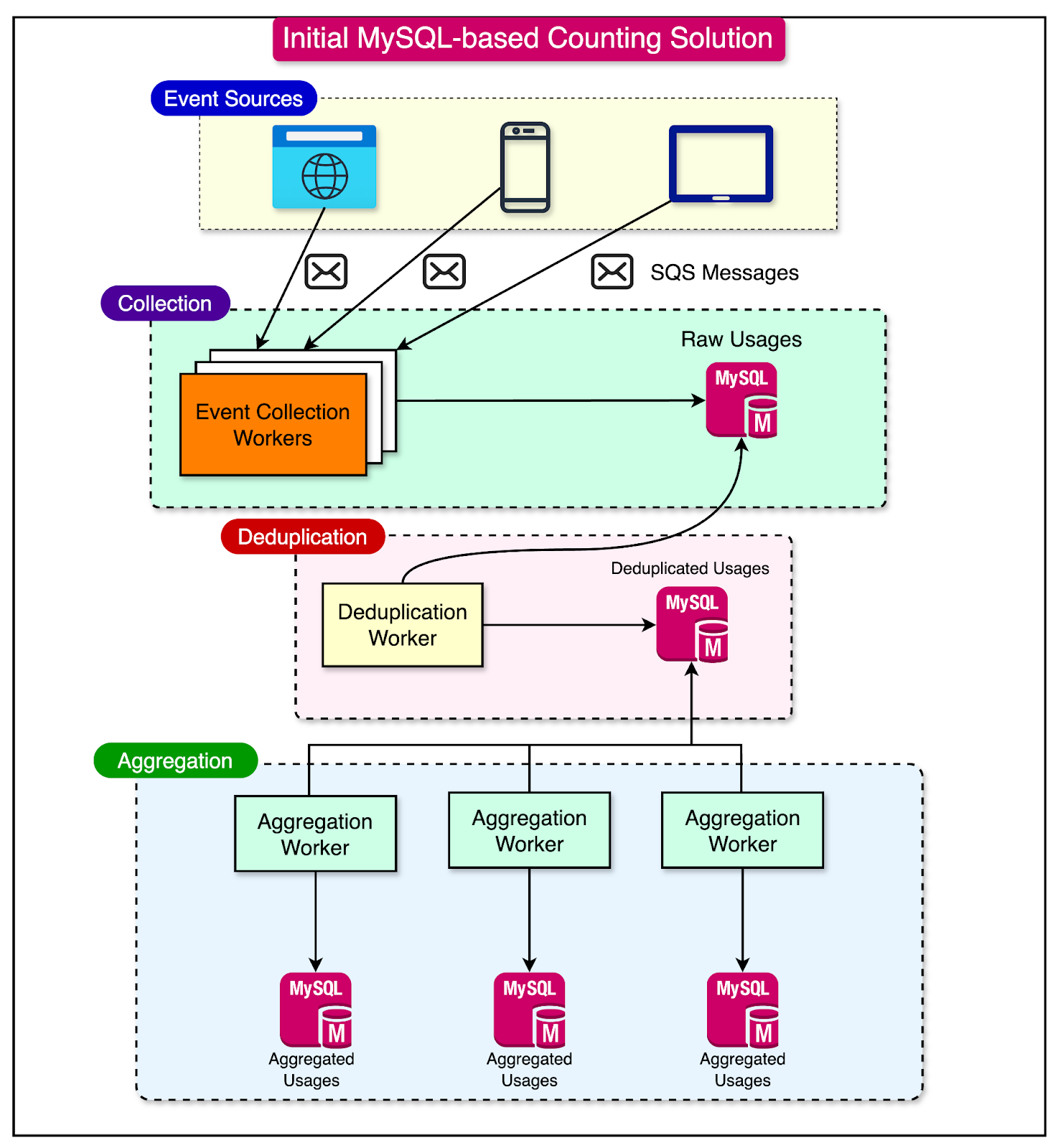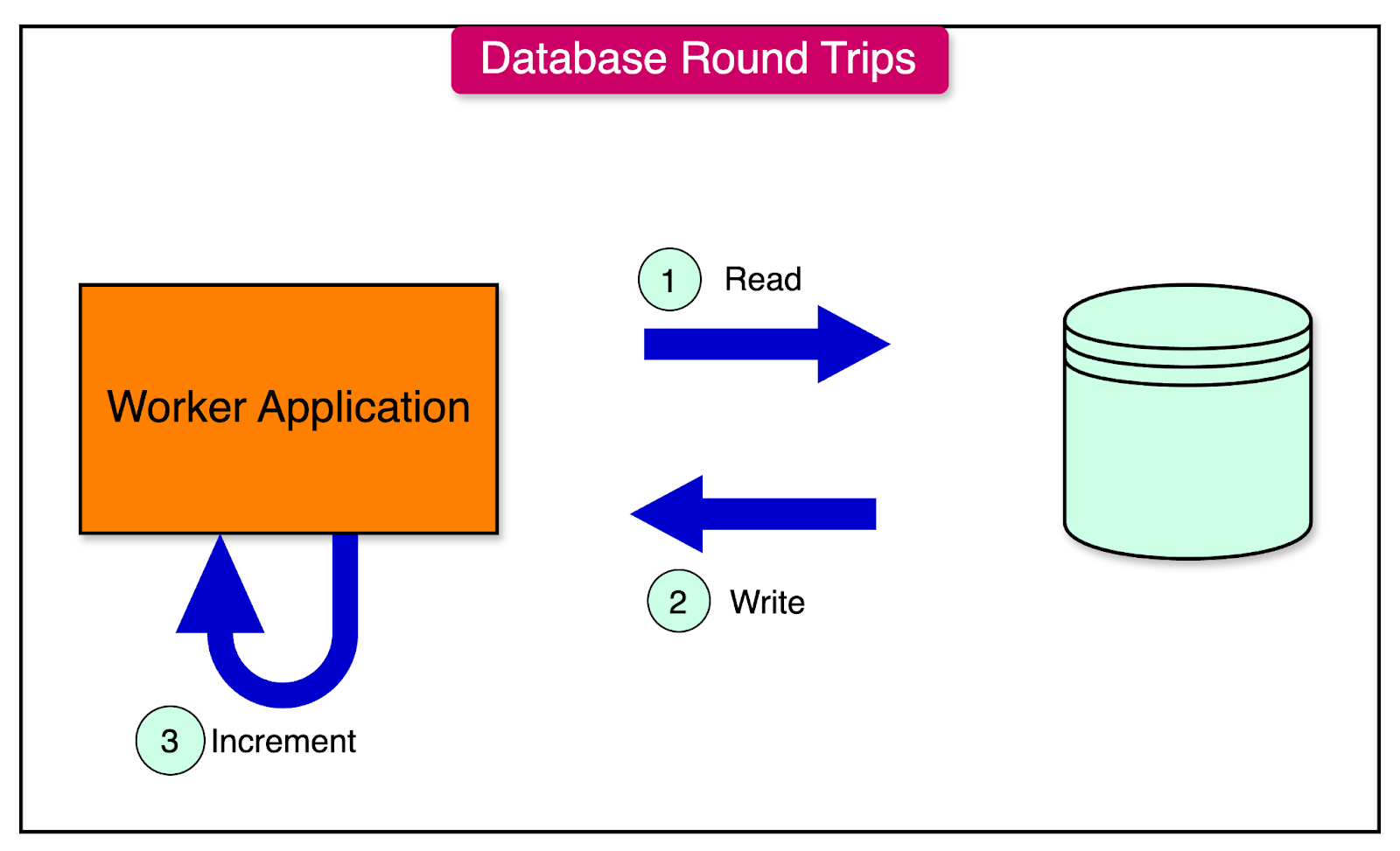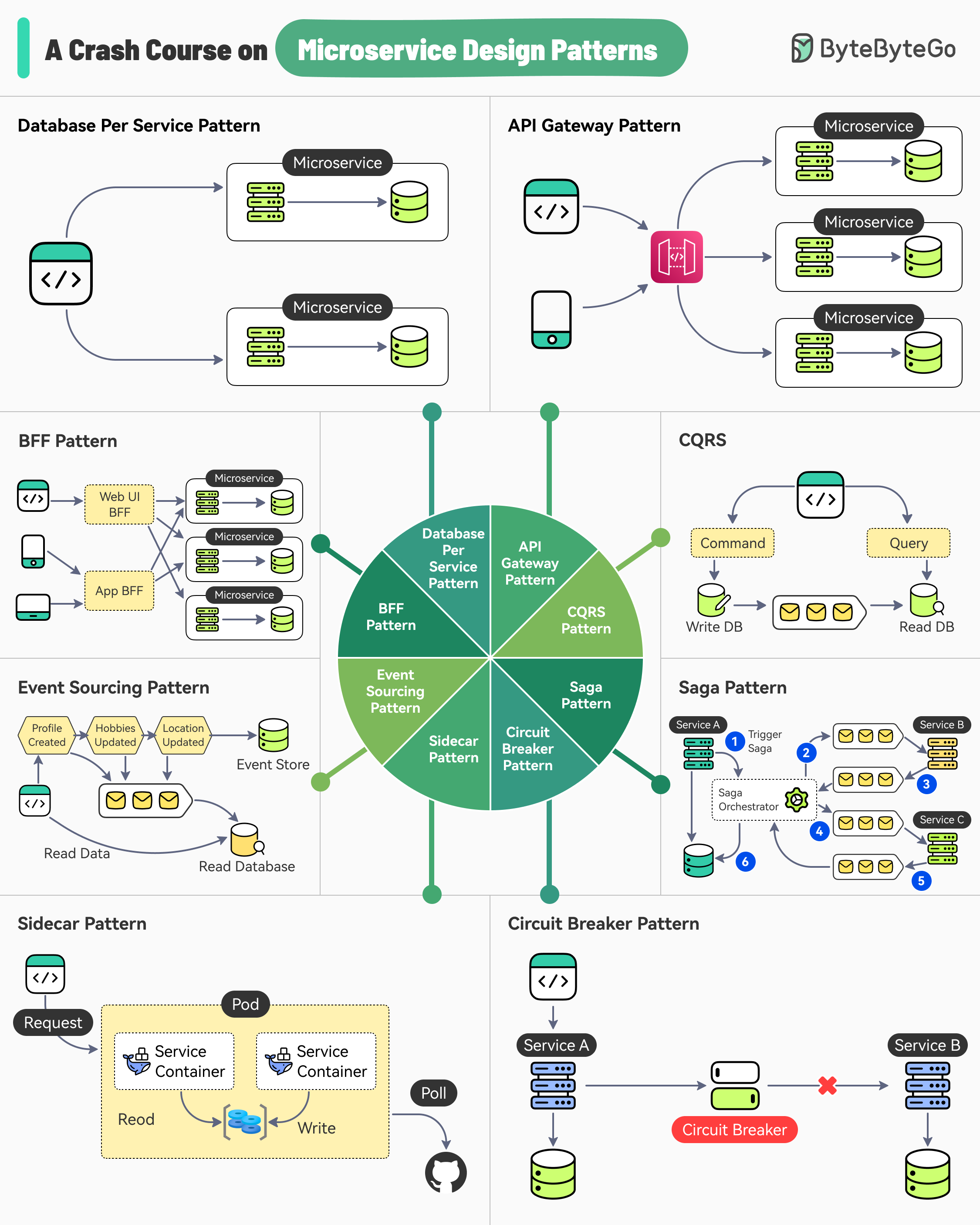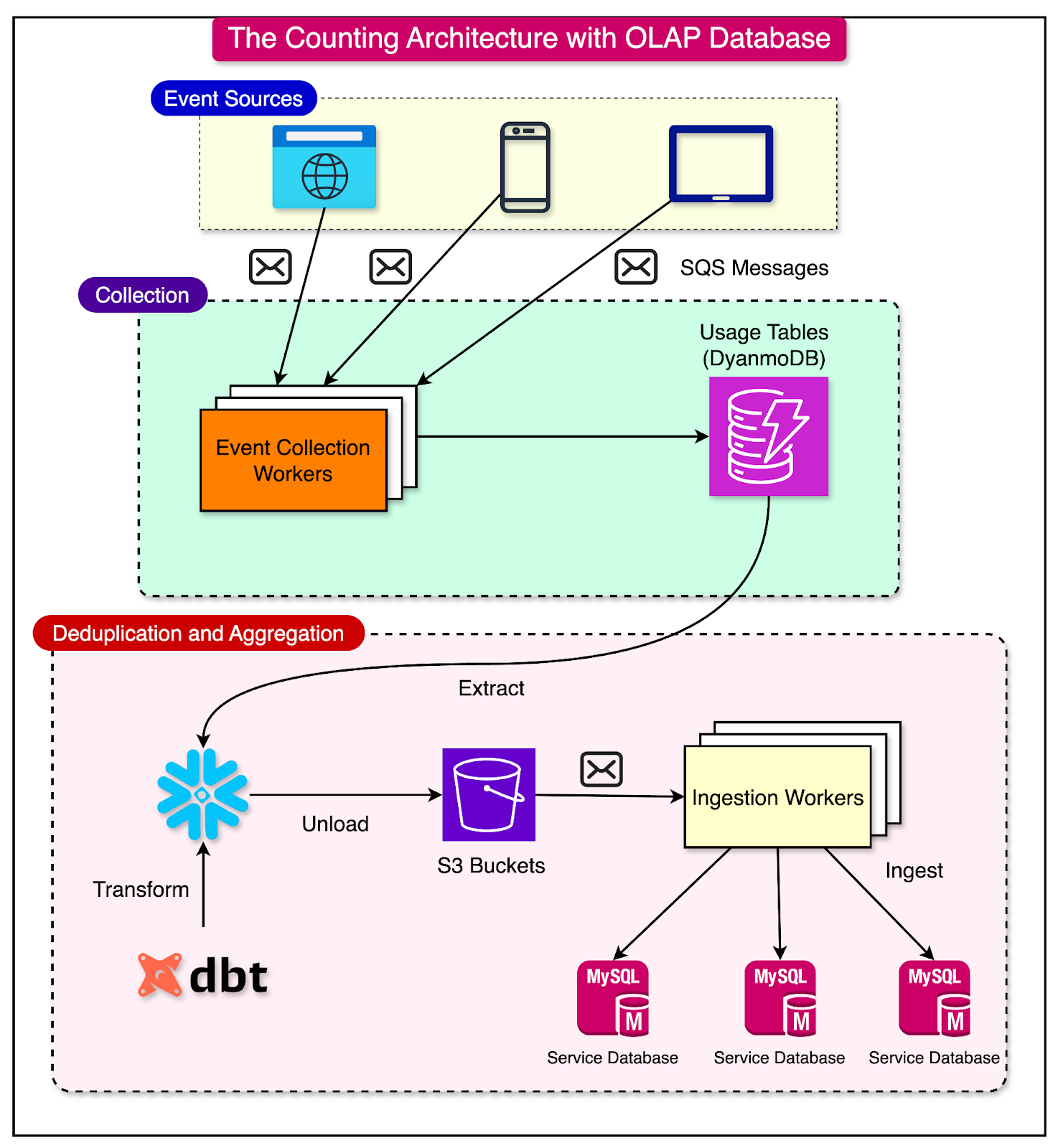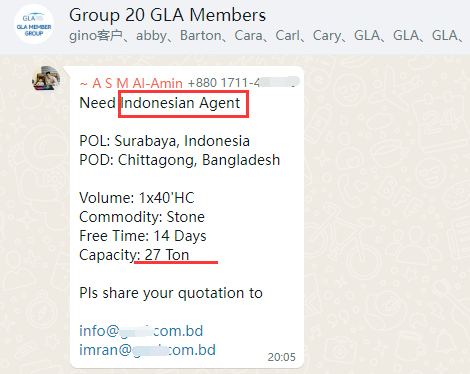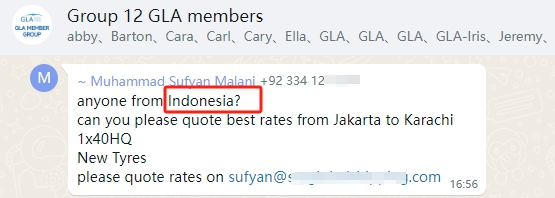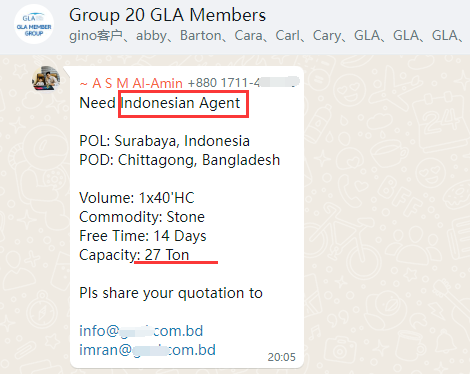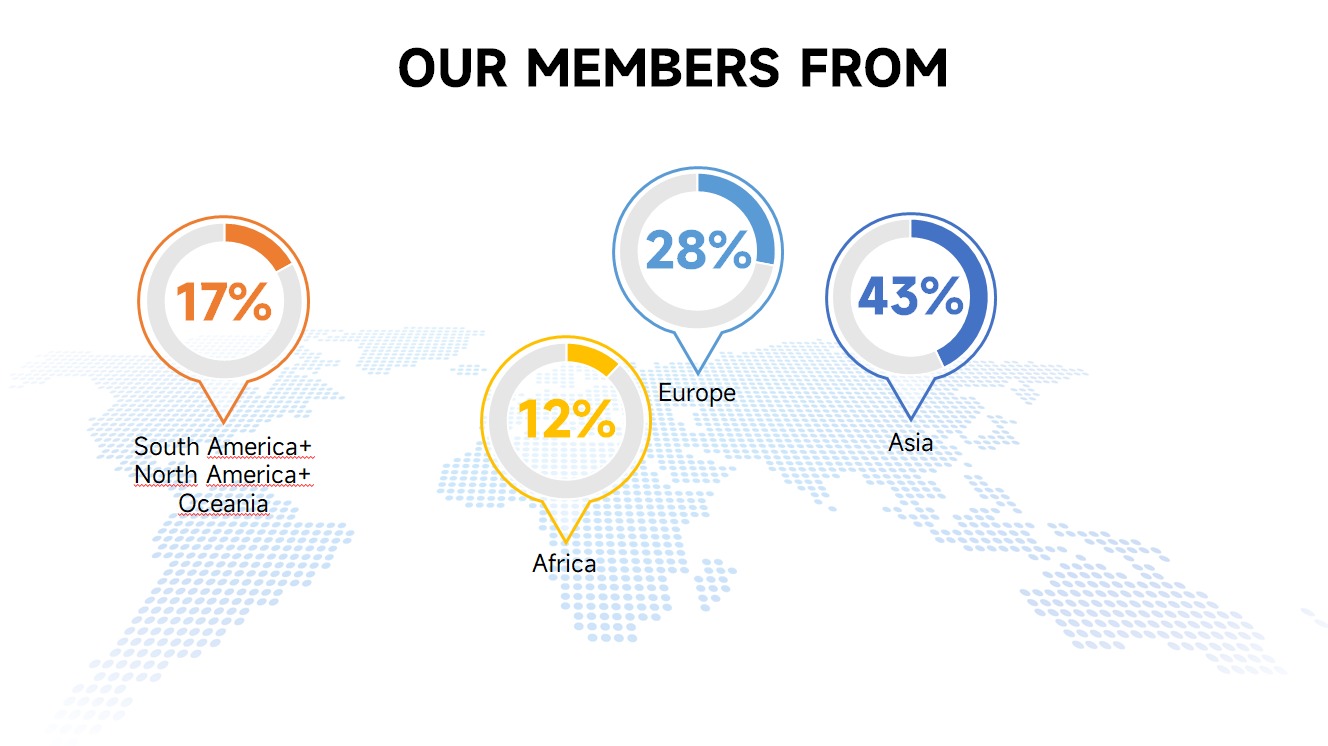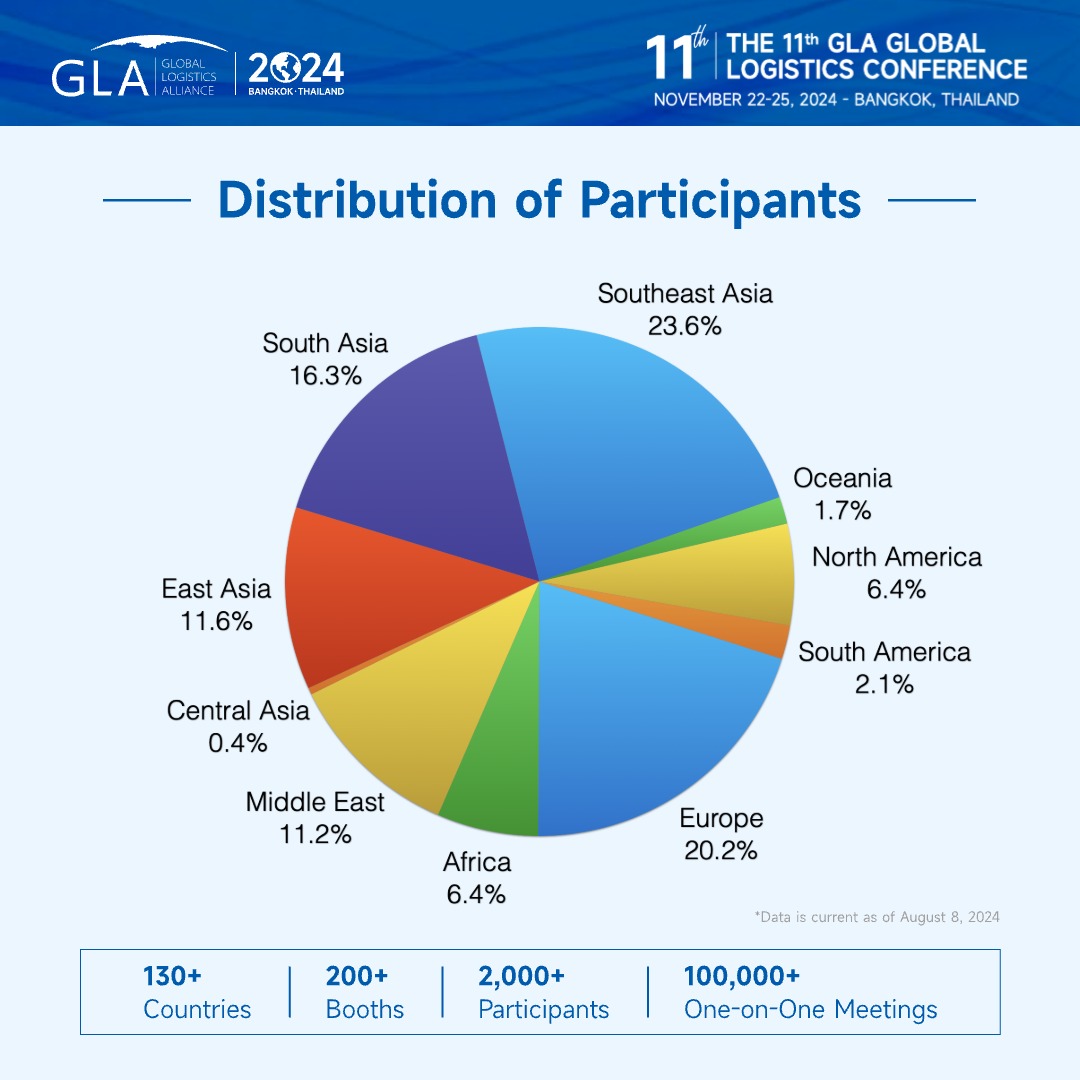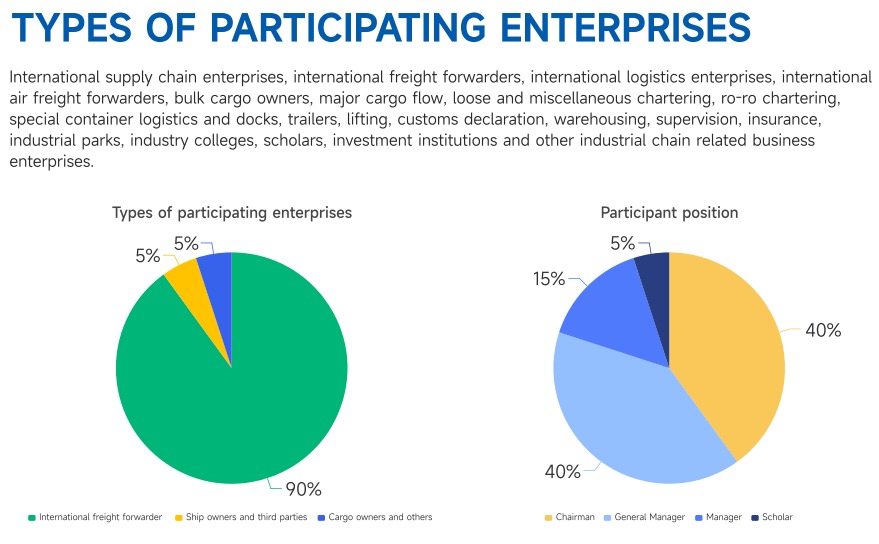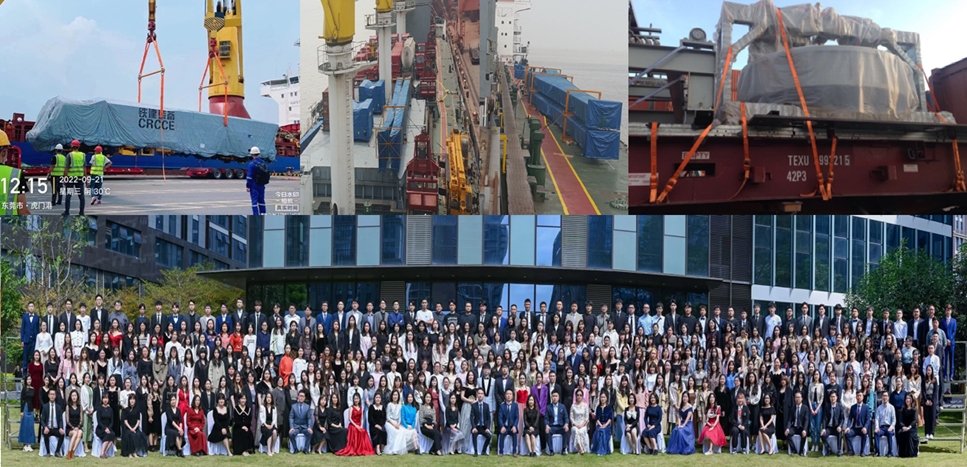Archives
- By thread 5399
-
By date
- June 2021 10
- July 2021 6
- August 2021 20
- September 2021 21
- October 2021 48
- November 2021 40
- December 2021 23
- January 2022 46
- February 2022 80
- March 2022 109
- April 2022 100
- May 2022 97
- June 2022 105
- July 2022 82
- August 2022 95
- September 2022 103
- October 2022 117
- November 2022 115
- December 2022 102
- January 2023 88
- February 2023 90
- March 2023 116
- April 2023 97
- May 2023 159
- June 2023 145
- July 2023 120
- August 2023 90
- September 2023 102
- October 2023 106
- November 2023 100
- December 2023 74
- January 2024 75
- February 2024 75
- March 2024 78
- April 2024 74
- May 2024 108
- June 2024 98
- July 2024 116
- August 2024 134
- September 2024 130
- October 2024 141
- November 2024 171
- December 2024 115
- January 2025 216
- February 2025 140
- March 2025 220
- April 2025 233
- May 2025 239
- June 2025 303
- July 2025 213
-
Counting Billions of Content Usage at Canva
Counting Billions of Content Usage at Canva
Hands-on Rust Developer Workshop: Build a Low-Latency Social Media App (Sponsored)͏ ͏ ͏ ͏ ͏ ͏ ͏ ͏ ͏ ͏ ͏ ͏ ͏ ͏ ͏ ͏ ͏ ͏ ͏ ͏ ͏ ͏ ͏ ͏ ͏ ͏ ͏ ͏ ͏ ͏ ͏ ͏ ͏ ͏ ͏ ͏ ͏ ͏ ͏ ͏ ͏ ͏ ͏ ͏ ͏ ͏ ͏ ͏ ͏ ͏ ͏ ͏ ͏ ͏ ͏ ͏ ͏ ͏ ͏ ͏ ͏ ͏ ͏ ͏ ͏ ͏ ͏ ͏ ͏ ͏ ͏ ͏ ͏ ͏ ͏ ͏ ͏ ͏ ͏ ͏ ͏ ͏ ͏ ͏ ͏ ͏ ͏ ͏ ͏ ͏ ͏ ͏ ͏ ͏ ͏ ͏ ͏ ͏ ͏ ͏ ͏ ͏ ͏ ͏ ͏ ͏ ͏ ͏ ͏ ͏ ͏ ͏ ͏ ͏ ͏ ͏ ͏ ͏ ͏ ͏ ͏ ͏ ͏ ͏ ͏ ͏ ͏ ͏ ͏ ͏ ͏ ͏ ͏ ͏ ͏ ͏ ͏ ͏ ͏ ͏ ͏ ͏ ͏ ͏ ͏ ͏ ͏ ͏ ͏ ͏ ͏ ͏ ͏ ͏ ͏ ͏ ͏ ͏ ͏ ͏ ͏ ͏ ͏ ͏ ͏ ͏ ͏ ͏ ͏ ͏ ͏ ͏ ͏ ͏ ͏ ͏ ͏ ͏ ͏ ͏ ͏ ͏ ͏ ͏ ͏ ͏ ͏ ͏ ͏ ͏ ͏ ͏ ͏ ͏ ͏ ͏ ͏ ͏ ͏ ͏ Forwarded this email? Subscribe here for moreHands-on Rust Developer Workshop: Build a Low-Latency Social Media App (Sponsored)
During this free interactive workshop oriented for developers, engineers, and architects, you will learn how to:
Create and compile a sample social media app with Rust
Connect the application to ScyllaDB (NoSQL data store) and Redpanda (streaming data)
Negotiate tradeoffs related to data modeling and querying
Manage and monitor the database for consistently low latencies
If you’re an application developer with an interest in Rust, Tokio, and event-driven architectures this workshop is for you! This is a great way to discover the NoSQL strategies used by top teams and apply them in a guided, supportive environment.
Disclaimer: The details in this post have been derived from the Canva Engineering Blog. All credit for the technical details goes to the Canva engineering team. The links to the original articles are present in the references section at the end of the post. We’ve attempted to analyze the details and provide our input about them. If you find any inaccuracies or omissions, please leave a comment, and we will do our best to fix them.
What if incorrect counting results in incorrect payments?
Either the company making the payment or the users receiving that payment based on the incorrect count lose money. Both scenarios are problematic from the business perspective.
This is exactly the situation that Canva faced when they launched the Creators Program.
As you might already know, Canva is a tool that makes design accessible to everyone worldwide. One of the main ways they make this possible is through the Canva Creators Program.
In the three years since its launch, the use of content from this program has doubled every 18 months. They process billions of content uses monthly based on which the creators are paid. This includes the use of templates, images, videos, and more.
It is a critical requirement for Canva to count the usage data of this content accurately since the payments made to the creators depend on this data. However, it also presents some big challenges:
Accuracy: The count has to be correct to maintain creator trust and ensure fair pay.
Scalability: The system needs to handle rapidly growing amounts of data
Operability: As data increases, so does the complexity of maintenance and problem-solving.
In this post, we will look at the various architectures Canva’s engineering team experimented with to implement a robust counting service and the lessons they learned in the process.
The Initial Counting Service Design
Canva's original design for the content usage counting service was built on a MySQL database, a familiar and widely-used technology stack.
This initial design comprised several key components:
A MySQL database for storing all usage data (including raw events, deduplicated usage, and aggregated counts).
Separate worker services handling different pipeline stages (data collection, deduplication, and aggregation).
The persistence of multiple layers of reusable intermediary output at various stages.
The process flow for the solution could be broken down into three main steps:
Data Collection: Usage events from various sources (web, and mobile apps) were collected and stored in MySQL.
Deduplication: A worker service identifies duplicated usage events and matches them with a specific set of rules.
Aggregation: Another worker scanned the updated deduplication table, incrementing counters in a separate table.
The diagram below shows the architecture on a high level.
This architecture employed a single-threaded sequential process for deduplication, using a pointer to track the latest scanned record. While this approach made it easier to reason about and verify data processing, especially during troubleshooting or incident recovery, it faced significant scalability challenges.
The system required at least one database round trip per usage record, resulting in O(N) database queries for N records, which became increasingly problematic as data volume grew.
The initial MySQL-based architecture prioritized simplicity and familiarity over scalability. It allowed for quick implementation but created substantial challenges as the system expanded.
The heavy reliance on MySQL for both storage and processing created a bottleneck, failing to leverage the strengths of distributed systems or parallel processing.
MySQL RDS does not horizontally scale through partitioning by itself. Every time they needed more storage, they doubled the RDS instance size. This happened every 8-10 months, resulting in significant operational overhead.
Once the MySQL RDS instance reached several TBs, maintaining it became costly.
Lastly, finding and fixing issues in case of incidents was difficult because engineers had to look into databases and manually fix the incorrect data.
Latest articles
If you’re not a paid subscriber, here’s what you missed.
To receive all the full articles and support ByteByteGo, consider subscribing:
Migration to DynamoDB
Faced with the scalability limitations of the MySQL-based counting service, the team initially looked to DynamoDB as a potential solution.
This decision was primarily driven by DynamoDB's reputation for handling large-scale, high-throughput workloads - a perfect fit for Canva's rapidly growing data needs.
The migration process began with moving raw usage events from the data collection stage to DynamoDB, which provided immediate relief to the storage constraints. This initial success prompted the team to consider moving the entirety of their data to DynamoDB. It was a move that would have necessitated a substantial rewrite of their codebase.
However, after careful evaluation, Canva decided against a full migration to DynamoDB.
While DynamoDB could have effectively addressed the storage scalability issues, it wouldn't have solved the fundamental problem of processing scalability. The team found it challenging to eliminate the need for frequent database round trips, which was a key bottleneck in their existing system.
This reveals a crucial lesson in system design: sometimes, what appears to be a storage problem is a processing problem in disguise.
Canva's approach clearly shows the importance of thoroughly analyzing the root causes of system limitations before committing to major architectural changes. It also highlights the complexity of scaling data-intensive applications, where the interplay between storage and processing capabilities can be subtle and non-obvious.
The OLAP-based Counting Service
Canva's latest architecture for the content usage counting service shows a shift from traditional OLTP databases to an OLAP-based solution, specifically using Snowflake.
The change came after realizing that previous attempts with MySQL and DynamoDB couldn't adequately address their scalability and processing needs. The new architecture altered how Canva processed and stored the usage data, adopting an ELT (Extract, Load, Transform) approach.
The diagram below shows the new architecture:
In the extraction phase, Canva pulled raw usage data from various sources, including web browsers and mobile apps. This data was then loaded into Snowflake using a reliable data replication pipeline provided by Canva’s data platform team. The reliability of this data replication was crucial, as it formed the foundation for all subsequent processing.
The transformation phase used Snowflake's powerful computational capabilities. It also utilized DBT (Data Build Tool) to define complex transformations.
These transformations were written as SQL-like queries, allowing for end-to-end calculations directly on the source data. For example, one transformation aggregated usages per brand using a SQL query that selected data from a previous step named 'daily_template_usages' and grouped it by ‘day_id’ and ‘template_brand’.
The SQL below shows the aggregate query.

Source: Canva Engineering Blog The main steps in the transformation process were as follows:
Extraction of source event data in JSON format from DynamoDB, which was not optimal for data warehouse query processing. Therefore, some JSON properties were projected into separate table columns within Snowflake for optimization.
Deduplicate and aggregate the usage events.
A key aspect of this new architecture was the elimination of intermediary outputs. Instead of persisting data at various pipeline stages, Canva materialized intermediate transformation outputs as SQL Views.
The Advantage of OLAP Database
The separation of storage and computing in an OLAP database like Snowflake was a game-changer for Canva. It enabled them to scale computational resources independently.
As a result, they could now aggregate billions of usage records within minutes, a task that previously took over a day. This improvement was largely due to most of the computation being done in memory, which is several orders of magnitude faster than the database round trips required in their previous architecture.
There were several improvements such as:
The pipeline latency was reduced from over a day to under an hour.
Incident handling became more manageable. Most issues could be resolved by simply re-running the pipeline end-to-end, without manual database interventions.
Reduction in over 50% of the stored data and elimination of thousands of lines of deduplication and aggregation calculation code. The logic rewritten in SQL was simpler compared to the previous code.
The number of incidents dropped to once every few months or fewer.
Challenges of the New Solution
Despite the advantages, the solution also introduced new challenges such as:
Transformation Complexity: The data transformation jobs, written in an SQL-like language and deployed as a standalone service, introduced new deployment and compatibility considerations.
Data Unloading: Canva needed to build a reliable pipeline to unload data from Snowflake into databases used by other services. This involved using S3 as intermediary storage and integrating with SQS for durability. Optimizing the ingestion query and carefully tuning rate limits was crucial to prevent service database throttling.
Infrastructure Complexity: The new architecture increased infrastructure complexity due to data replication integration and standalone services running transformation jobs. This required additional effort to maintain observability across different toolsets.
Conclusion
Canva’s journey of implementing the counting service for the Creators Program is full of learning for software developers and architects.
Some of the key points to take away are as follows:
Simplicity is crucial for designing reliable services. In other words, reducing code and data complexity is the key. For example, minimizing intermediary output in various counting pipeline stages using OLAP and ELT helped simplify the system.
It’s good to start small and be pragmatic. The initial MySQL-based design served its purpose for the first two years and allowed timely delivery of the functionality to the users. Once scalability became a problem, they looked at alternative solutions.
Comprehensive observability, while requiring extra overhead, helps identify and resolve problems. Close monitoring from day one of every part of the pipeline was crucial to make the right decisions.
Recognizing when solutions are no longer adequate and being open to change is important. In Canva’s case, this was demonstrated by the willingness to pivot from familiar MySQL to a more suitable solution using OLAP database.
Big changes happen in increments. For example, the journey from MySQL to DynamoDB and finally to an OLAP solution showed the power of iterative improvements.
Reliable infrastructure is important to build a stable platform.
References:
SPONSOR US
Get your product in front of more than 1,000,000 tech professionals.
Our newsletter puts your products and services directly in front of an audience that matters - hundreds of thousands of engineering leaders and senior engineers - who have influence over significant tech decisions and big purchases.
Space Fills Up Fast - Reserve Today
Ad spots typically sell out about 4 weeks in advance. To ensure your ad reaches this influential audience, reserve your space now by emailing sponsorship@bytebytego.com
Like
Comment
Restack
© 2024 ByteByteGo
548 Market Street PMB 72296, San Francisco, CA 94104
Unsubscribe
by "ByteByteGo" <bytebytego@substack.com> - 11:35 - 13 Aug 2024 -
Proposing a Link-Building Partnership
Hello,
I'm an outreach link-building assistant and guest post service provider.
I have 10000+ high-quality sites.??
Should I send you my full list with the price? or if you want you can share your requirements.
I will provide you with sites accordingly.
Your post will be permanent and the link will be do-follow. Your post will be indexed in Google.
If you have any questions, please don't hesitate to contact us.
I am waiting to hear back from you soon!
Thanks!Sourav Bauri
Blogger Outreach at Digital Link BuildingT: +91 8436922159
M: +919547021731
sourav.digitallinkbuilding@gmail.com - digitallinkbuilding.com
A: Jorda, Indpur, West Bengal , India
We’ve been voted one of the best SEO companies for 2010, and for good reason! Our team of knowledgeable experts can grow your business online by improving rankings, and increasing traffic and overall visibility.
by "Sourav Bauri" <sourav.digitallinkbuilding@gmail.com> - 11:11 - 13 Aug 2024 -
Vulnerability Report 02: Failure to invalidate session on Password Change
Dear Starjet, Thank you for reaching out to Odoo Privacy. If you wish to report a behaviour as a Security Vulnerability, please follow the instructions on this document: [...] ͏ ͏ ͏ ͏ ͏ ͏ ͏ ͏ ͏ ͏ ͏ ͏ ͏ ͏ ͏ ͏ ͏ ͏ ͏ ͏ ͏ ͏ ͏ ͏ ͏ ͏ ͏ ͏ ͏ ͏ ͏ ͏ ͏ ͏ ͏ ͏ ͏ ͏ ͏ ͏ ͏ ͏ ͏ ͏ ͏ ͏ ͏ ͏ ͏ ͏ ͏ ͏ ͏ ͏ ͏ ͏ ͏ ͏ ͏ ͏ ͏ ͏ ͏ ͏ ͏ ͏ ͏ ͏ ͏ ͏ ͏ ͏ ͏ ͏ ͏ ͏ ͏ ͏ ͏ ͏ ͏ ͏ ͏ ͏ ͏ ͏ ͏ ͏ ͏ ͏ ͏ ͏ ͏ ͏ ͏ ͏ ͏ ͏ ͏ ͏ ͏ ͏ ͏ ͏ ͏ ͏ ͏ ͏ ͏ ͏ ͏ ͏ ͏ ͏ ͏ ͏ ͏ ͏ ͏ ͏ ͏ ͏ ͏ ͏ ͏ ͏ ͏ ͏ ͏ ͏ ͏ ͏ ͏ ͏ ͏ ͏ ͏ ͏ ͏ ͏ Dear Starjet,
Thank you for reaching out to Odoo Privacy.
If you wish to report a behaviour as a Security Vulnerability, please follow the instructions on this document: https://www.odoo.com/security-report
In particular, you will note in the guidelines that the correct email to report security issues is security@odoo.com (privacy@odoo.com is for Privacy Questions only).
In the same document, you will find information related to the rewards. If you report a new security issue that is confirmed to be critical (see the DO REPORT section), we will publicly thank you by adding your name to the Odoo Security Hall of Fame, on the right of this page. No monetary rewards are offered.
Have a nice day!
ElenaPowered by Odoo
by "Elena Maglio (elm)" <elm@odoo.com> - 08:20 - 13 Aug 2024 -
Vulnerability Report 03:No CSRF protection on login
Dear Starjet, Thank you for reaching out to Odoo Privacy. If you wish to report a behaviour as a Security Vulnerability, please follow the instructions on this document: [...] ͏ ͏ ͏ ͏ ͏ ͏ ͏ ͏ ͏ ͏ ͏ ͏ ͏ ͏ ͏ ͏ ͏ ͏ ͏ ͏ ͏ ͏ ͏ ͏ ͏ ͏ ͏ ͏ ͏ ͏ ͏ ͏ ͏ ͏ ͏ ͏ ͏ ͏ ͏ ͏ ͏ ͏ ͏ ͏ ͏ ͏ ͏ ͏ ͏ ͏ ͏ ͏ ͏ ͏ ͏ ͏ ͏ ͏ ͏ ͏ ͏ ͏ ͏ ͏ ͏ ͏ ͏ ͏ ͏ ͏ ͏ ͏ ͏ ͏ ͏ ͏ ͏ ͏ ͏ ͏ ͏ ͏ ͏ ͏ ͏ ͏ ͏ ͏ ͏ ͏ ͏ ͏ ͏ ͏ ͏ ͏ ͏ ͏ ͏ ͏ ͏ ͏ ͏ ͏ ͏ ͏ ͏ ͏ ͏ ͏ ͏ ͏ ͏ ͏ ͏ ͏ ͏ ͏ ͏ ͏ ͏ ͏ ͏ ͏ ͏ ͏ ͏ ͏ ͏ ͏ ͏ ͏ ͏ ͏ ͏ ͏ ͏ ͏ ͏ ͏ Dear Starjet,
Thank you for reaching out to Odoo Privacy.
If you wish to report a behaviour as a Security Vulnerability, please follow the instructions on this document: https://www.odoo.com/security-report
In particular, you will note in the guidelines that the correct email to report security issues is security@odoo.com (privacy@odoo.com is for Privacy Questions only).
In the same document, you will find information related to the rewards. If you report a new security issue that is confirmed to be critical (see the DO REPORT section), we will publicly thank you by adding your name to the Odoo Security Hall of Fame, on the right of this page. No monetary rewards are offered.
Have a nice day!
ElenaPowered by Odoo
by "Elena Maglio (elm)" <elm@odoo.com> - 08:20 - 13 Aug 2024 -
Re: Seeking for agent in Indonesia
Dear agent,
Greeting from Charlotte and GLA family. Trust you are doing great.
I sincerely invite you to join GLA platform and cover the increasing request from/to Indonesia from our GLA members.
Above 75% of GLA Members are first-class agents with wide range of primary resources. GLA fulfills all your needs in terms of finding reliable agents or getting huge volume of inquiries from/to your area. Have you ever tried to experience GLA Global Logistics Network for your business development and resources integration?
Besides, We are planning to hold the next GLA Global Logistics Conference in Bangkok, Thailand on 22th November 2024. Please don’t miss this opportunity to attend the conference as a GLA member.
I am looking forward to hearing you back.
Best regards,
Charlotte Jiang
GLA Overseas Department
Mobile:
(86) 181-2880-6170
Email:
Company:
GLA Co.,Ltd
Website:
Address:
No. 2109, 21st Floor, HongChang, Plaza, No. 2001, Road Shenzhen, China
The 11th GLA Conference - Bangkok Thailand on 22th November 2024 – click here for registration
Ø The 10th GLA Conference in Dubai UAE, online album
Ø The 9th GLA Conference in Hainan China, online album
【Notice Agreement No 7】
7. GLA president reserves the right to cancel or reject membership or application. Company shall cease to be a member of GLA if:
a) the Member does not adhere to GLA terms and conditions
b) the Member gives notice of resignation in writing to the GLA.
c) No good reputation in the market.
d) Have bad debt records in the GLA platform or in the market
by "Charlotte" <member139@glafamily.com> - 04:46 - 13 Aug 2024 -
Mejora tus fotos con una edición de muestra gratuita!
Mejora tus fotos con una edición de muestra gratuita!
Hello Manu Reyes Fotografo,
I hope this email finds you well. My name is Grace, and I’m with Photo Editing Company. We offer professional photo editing services to help photographers like you bring out the best in your images.
We know that capturing the perfect shot is just the beginning. Our photo editing can help you polish your photos to perfection, making them stand out and impress your clients.
Here’s how we can help you:
- Precise Edits: Remove imperfections and enhance details for stunning results.
- Color Correction: Achieve perfect color balance and true-to-life tones.
- Quick Turnaround: Get your edited photos back fast to meet tight deadlines.
- Customized Edits: Tailored edits to match your unique style and branding.
- Background Removal: Clean up or change backgrounds to highlight your subjects.
- Advanced Retouching: Smooth skin, remove blemishes and refine features.
- Object Removal: Eliminate unwanted objects for a clean, professional look.
To show you what we can do, we’d love to offer you a free sample edit. Please send us one of your photos, and we’ll enhance it to demonstrate our skills.
Thank you for your time, and I look forward to the chance to work together.
Best regards,
Grace S.
Marketing Department | Photo Editing Company
marketing@photoeditingcompany.comPhoto Editing Company, Belmont Village, Minglanilla, Cebu, Cebu City 6046, Philippines
by "Grace Smith" <hello=photoeditingcompany.com@hubspotstarter.hs-send.com> - 04:12 - 13 Aug 2024 -
Re: Seeking for agent in Indonesia
Dear agent,
Greeting from Charlotte and GLA family. Trust you are doing great.
I sincerely invite you to join GLA platform and cover the increasing request from/to Indonesia from our GLA members.
Above 75% of GLA Members are first-class agents with wide range of primary resources. GLA fulfills all your needs in terms of finding reliable agents or getting huge volume of inquiries from/to your area. Have you ever tried to experience GLA Global Logistics Network for your business development and resources integration?
Besides, We are planning to hold the next GLA Global Logistics Conference in Bangkok, Thailand on 22th November 2024. Please don’t miss this opportunity to attend the conference as a GLA member.
I am looking forward to hearing you back.
Best regards,
Charlotte Jiang
GLA Overseas Department
Mobile:
(86) 181-2880-6170
Email:
Company:
GLA Co.,Ltd
Website:
Address:
No. 2109, 21st Floor, HongChang, Plaza, No. 2001, Road Shenzhen, China
The 11th GLA Conference - Bangkok Thailand on 22th November 2024 – click here for registration
Ø The 10th GLA Conference in Dubai UAE, online album
Ø The 9th GLA Conference in Hainan China, online album
【Notice Agreement No 7】
7. GLA president reserves the right to cancel or reject membership or application. Company shall cease to be a member of GLA if:
a) the Member does not adhere to GLA terms and conditions
b) the Member gives notice of resignation in writing to the GLA.
c) No good reputation in the market.
d) Have bad debt records in the GLA platform or in the market
by "Charlotte.J" <member015@glafamily.com> - 02:59 - 13 Aug 2024 -
“React Native Dev – $10/hr”
Hi there,
Do you need an React Native developer for starts from $10 per hour, having 2-8 years of experience, will be available next Monday. If you're interested, I can arrange a meeting with them.
Best Regards,
Ashish
by "Ashish" <ashishi@xoniergroup.com> - 01:00 - 12 Aug 2024 -
New List OF UK USA Blogs Just $80/Post
Hello
we are offering guest posting service on our blogs, if you are interested in guest posting for your promotion projects please let me know.
Guest posting: - We are allowing 500+ words content with 2 do follow links (of your website) on my blogs.
I have many more blogs with many industries. If you like guest posting and want to see blogs for your campaign please let me know industry.
Sample of guest post
https://www.theexeterdaily.co.uk/news/charities/nominate-charity-receive-festive-financial-boost%C2%A0
https://teens4technology.org/types-of-cabinet-software-for-cabinet-design/
https://4-software-downloads.com/
http://www.7sixty.com/
https://www.spamweed.com/
https://technicamix.com/
https://teens4technology.org/
https://thetechblog.net/
https://www.techjazy.com/
https://technologywine.com/
Business
https://sapphirebusinesses.co.uk/
https://frenchinbusiness.co.uk/
https://oliverandcobusiness.co.uk/
https://trading4business.co.uk/
https://thereceiptrollbusiness.co.uk/
Finance
https://justgoinsurance.co.uk/
https://ukinsurance.org.uk/
https://tristarfinance.co.uk/
https://wakefieldfinance.co.uk/
https://thefinanceworld.co.uk/
https://financeright.co.uk/
Tech
https://dtechdesigns.co.uk/
https://technotv.co.uk/
https://applettechnology.co.uk/
https://carmtechnology.co.uk/
http://mtechcomputing.co.uk/
https://leadtechnology.co.uk/
Travel
https://chillinorthholidays.co.uk/
https://tripter.co.uk/
https://papillonholidays.co.uk/
https://theadventurerclub.co.uk/
Health
https://healthylivingretreats.co.uk/
https://allhealhealthcare.co.uk/
https://independenthealthconsultant.co.uk/
https://purityhealthandfitness.co.uk/
https://ultimatehealthandfitness.co.uk/
https://nutritionalhealthcare.co.uk/
https://cpmedicalcentre.co.uk
https://prestonmedicalcentre.co.uk/
Auto
https://hsr-autos.co.uk/
https://roadecars.co.uk/
https://asmotorstaunton.co.uk/
https://cloud9cars.co.uk/
Home
https://homesweephome.co.uk/
https://westfieldhomes.co.uk/
https://homereportonline.co.uk/
https://yourhomepagein.co.uk/
ThankKevin
by "Kevin Paul" <kpaul6771@gmail.com> - 11:01 - 12 Aug 2024-
Re: New List OF UK USA Blogs Just $80/Post
Hello there,
Waiting for your reply
Are you interested in guest posting for your website?
Please check here some more high DA blogs
https://www.theodysseyonline.com/
https://dailybusinesspost.com/
Best Regards,
Kevin
On Mon, 12 Aug 2024 at 08:01, Kevin Paul <kpaul6771@gmail.com> wrote:Hello
we are offering guest posting service on our blogs, if you are interested in guest posting for your promotion projects please let me know.
Guest posting: - We are allowing 500+ words content with 2 do follow links (of your website) on my blogs.
I have many more blogs with many industries. If you like guest posting and want to see blogs for your campaign please let me know industry.
Sample of guest post
https://www.theexeterdaily.co.uk/news/charities/nominate-charity-receive-festive-financial-boost%C2%A0
https://teens4technology.org/types-of-cabinet-software-for-cabinet-design/
https://4-software-downloads.com/
http://www.7sixty.com/
https://www.spamweed.com/
https://technicamix.com/
https://teens4technology.org/
https://thetechblog.net/
https://www.techjazy.com/
https://technologywine.com/
Business
https://sapphirebusinesses.co.uk/
https://frenchinbusiness.co.uk/
https://oliverandcobusiness.co.uk/
https://trading4business.co.uk/
https://thereceiptrollbusiness.co.uk/
Finance
https://justgoinsurance.co.uk/
https://ukinsurance.org.uk/
https://tristarfinance.co.uk/
https://wakefieldfinance.co.uk/
https://thefinanceworld.co.uk/
https://financeright.co.uk/
Tech
https://dtechdesigns.co.uk/
https://technotv.co.uk/
https://applettechnology.co.uk/
https://carmtechnology.co.uk/
http://mtechcomputing.co.uk/
https://leadtechnology.co.uk/
Travel
https://chillinorthholidays.co.uk/
https://tripter.co.uk/
https://papillonholidays.co.uk/
https://theadventurerclub.co.uk/
Health
https://healthylivingretreats.co.uk/
https://allhealhealthcare.co.uk/
https://independenthealthconsultant.co.uk/
https://purityhealthandfitness.co.uk/
https://ultimatehealthandfitness.co.uk/
https://nutritionalhealthcare.co.uk/
https://cpmedicalcentre.co.uk
https://prestonmedicalcentre.co.uk/
Auto
https://hsr-autos.co.uk/
https://roadecars.co.uk/
https://asmotorstaunton.co.uk/
https://cloud9cars.co.uk/
Home
https://homesweephome.co.uk/
https://westfieldhomes.co.uk/
https://homereportonline.co.uk/
https://yourhomepagein.co.uk/
ThankKevin
by "Kevin Paul" <kpaul6771@gmail.com> - 12:58 - 13 Aug 2024
-
-
Vulnerability Report 03:No CSRF protection on login
Vulnerability: No CSRF protection on login.Level: CriticalDescription:The login form is not protected against Cross-Site Request Forgery.
An attacker can craft an HTML page containing POST information to have the victim sign into an attacker's account, where the victim can add information assuming he/she is logged into the correct account, where in reality, the victim is signed into the attacker's account where the changes are visible to the attacker. The real issue here is that when the victim runs the HTML Proof of Concept, the account is logged in to the attacker without any visible warnings, thus the victim is capable of theft of data and potentially vulnerable to account takeover.
Steps to reproduce:
1. Create a victim account. (Google Chrome)
2. Create an attacker account. (Firefox)3. Now intercept the attacker browser's request and save it as . HTML.
4. Now run that POC in the victim's browser and press submit.
5. On the victim's browser, he/she is logged in as an attacker without any indication unless the page is manually refreshed.Proof of concept:<html>
<body>
<form action="https://www.odoo.com/web/login" method="POST">
<input type="hidden" name="utc_offset" value="-300" />
<input type="hidden" name="email" value="abul37772@gmail.com" />
<input type="hidden" name="password" value="Testing123@#$" />
<input type="submit" value="Submit request" />
</form>
<script>
history.pushState('', '', '/');
document.forms[0].submit();
</script>
</body>
</html>Mitigation:
You are using an authenticity token to prevent this but it is not validating so add a valid CSRF token and token verification method to the login request or make some type of prompt that the session has ended when the new login from the attacker occurs.If you have any questions, please feel free to contact me. I'll be more than happy to assist you.
I look forward to hearing from you soon
Thanks and RegardsTeam Star jet Cyber,Afshan
by "starjet cyber" <starjetcyber22@gmail.com> - 10:19 - 12 Aug 2024 -
Vulnerability Report 02: Failure to invalidate session on Password Change
Hi team,I am a security researcher and this time I found this vulnerabilityin your website.Vulnerability Report : Failure to invalidate session on Password ChangeWeakness: Insufficient Session ExpirationDescription :I observe that when we change password from one browser in place of sessionExpire from other browser its just update password from other browser andthe old session got updated without being logoutSteps to check Session Management issue On password change :1- login From two browser at a time [ From Chrome browser and From MozillaFirefox ]2- Change password in setting from chrome browser3- Now Check Mozilla Firefox4- Your Session Got Updated in place of expirationRecommendations:If Session is Updating From One Browser so Others Should Expire First to renew session after login.Impact
If the attacker has a user password and logged in different places, As other sessions are not destroyed, the attacker will be still logged in your account even after changing password, cause his session is still active.. Malicious actor can completely access your account till that session expires! So, your account remains insecure even after the changing of password.
Please let me know if any more info is needed !
Looking after your response.Thanks & Regards,
Through Star jet Cyber,
Afshan
by "starjet cyber" <starjetcyber22@gmail.com> - 10:19 - 12 Aug 2024 -
Vulnerability Report 01: Failure to invalidate session on Email Change
Hi team,I am a security researcher and this time I found this vulnerability in your website.Vulnerability Report : Failure to invalidate session on Email ChangeWeakness : Insufficient Session ExpirationDescription:I observe that when we change Email from one browser in place of sessionExpire from another browser it just updates Email from another browser andthe old session gets updated without being logged out.Steps to check Session Management issue On Email change :1- login From two browser at a time [ From Chrome browser and From MozillaFirefox ]2- Change Email in setting from chrome browser3- Now Check Mozilla FireFox4- Your Session Got Updated in place of expirationRecommendations:If Session is Updating From One Browser so Others Should Expire First torenew session after login.Please let me know if any more info is needed !Looking after your response.Thanks & Regards,
Through Star jet Cyber,
Afshan
by "starjet cyber" <starjetcyber22@gmail.com> - 10:19 - 12 Aug 2024 -
Re:Looking for win-win cooperation!
Dear friends,
This is Joy from GLA network. Hope everything goes on well there.
Very delighted to write email with GLA Network details and sincerely invite your esteemed company to become GLA membership with much promotion.
Since establishment of GLA, we go through much challenges and opportunities. We stand for newly emerging enterprise since 2016 in this industry.
Fortunately GLA boosts very excellent with more than 7000 members from 178 countries.
We are developing as business-oriented and services-focused network to benefit each member from services department and whole sales team.
For more details, please check it from our website: www.glafamily.com
In the same time, GLA network will hold the 11th Global Logistics Conference in Bangkok, Thailand on November 22nd- 25th, it is a good chance for you to find reliable partner, gain business and expand global influence! Welcome you attend our Thailand conference as GLA new member.
I would like to share with you as an international freight forwarder, why do you need to attend the offline Global Logistics Conference?
1.Face-to-face communication with more than 2000 agents from 130 countries to establish direct contact.
2.On-site direct signing of orders to promote cooperation
3.More than 10000 one-on-one meetings, 2.5 days sufficient time to present the company's strength and demand with each agent to find promotion business opportunities
4. Massive promotion of attendees and their companies in online one-on-one interview. and advertise on industrial social media such as Google, Facebook, Linkedin, Tiktok, CCTV and more.
5. Face-to-face conversation with industry elites, to update international logistics industry information as well the trend for each market.
Thank you.
Any interesting, keep us posted.
Conference register: http://www.glafamily.com/meeting/registration/Joy

(Notice: If you would not like to receive email blush, please inform us timely. We will delete your data from the database)
Joy Jiang
Overseas Dept
M: +86 153 6164 8088;
( Whatsapp & Wechat)
A:GLA Co.,Limited
HongChang Plaza, 2001,Shennan Dong Road,Shenzhen
518000,China
by "GLA family" <member321@glafamily.com> - 06:31 - 12 Aug 2024 -
Fw: RE:Shanghai-- Barranquilla/Buenaventura 40hq&BB&OOG
Dear Sir/Madam,Good day!I'm Linwer, This is WINCO logisticsDo you have any goods from China to Barranquilla/Buenaventura ?We can handle the shipment from SHENZHEN/Shanghai/GUANGZHOU/FOSHAN/NINGBO/Qingdao/XIAMEN/TIANJIN.If you want to ship from China, please contact me and I will give you the best rate support.We can provide the services:1)FCL shipment2)Open Top &Flat Rack &Reefer Container Transport3)Break Bulk Vessel Chartering4)Heavy lift and RORO Vehicles5)Inland Trucking and Customer clearance6)HAZ&Chemical cargoBelow photos which we handled some shipment in before, just for your esay reference,** Please accept our apologies in case we cause you any inconvenience. Should you wish to stop receiving our newsletter, please press here to Unsubscribe **
Warm Regards,Linwer Weir(Miss)---heavy lift & project cargoWINCO GROUP LIMITEDWhatsapp:+86 18377051612Wechat: +86 13877090882Skype: live:.cid.f4067aeb8522b2c4Tel: 28511464-640E-mail:Linwer@wincologistics.comWeb:www.wincologistics.comAddress:c5-Rm601,Zhonghao newtown, BanTian sub-District, Longgang, shenzhen, PR.china,518129深圳市龙岗区坂田街道象角塘社区中浩新城c5栋601
by "linwer@wincologistics.net" <linwer@wincologistics.net> - 06:17 - 12 Aug 2024 -
Join me to learn how to proactively monitor availability and performance with New Relic synthetics
Hi MD,
Liam, Senior Manager of Customer Training at New Relic University, here.I’d like to personally invite you to my online workshop on Thursday 22nd August at 10am BST / 11am CEST on how to Proactively monitor availability and performance with New Relic synthetics.
In this 90-minute workshop, you'll learn about synthetic monitoring and automated testing in New Relic. You'll discover how to leverage automated testing to identify specific errors and slow pages, ensuring the best customer experience.
Attend and learn how to:
- Set up monitors for specific use cases.
- Report on specific SLAs and SLOs.
- Use New Relic query language (NRQL) alerts to notify you of potential issues.
The interactive lab sessions will cover:
- Monitor types: Ping, simple browser, scripted browser, API test.
- Monitor alerts: Synthetic alerts and NRQL alerts.
- Aggregate and individual monitors.
- Dashboards to chart monitor performance.
While we recommend attending the hands-on workshop live, you can also register to receive the recording.
I hope to see you then,
Liam HurrellSenior Manager, Customer TrainingNew Relic
This email was sent to info@learn.odoo.com as a result of subscribing or providing consent to receive marketing communications from New Relic. You can tailor your email preferences at any time here.Privacy Policy © 2008-24 New Relic, Inc. All rights reserved
by "Liam Hurrell, New Relic" <emeamarketing@newrelic.com> - 05:07 - 12 Aug 2024 -
You’re only human: To lead others, lead yourself first
Leading Off
Soft-skill superpowers
by "McKinsey Leading Off" <publishing@email.mckinsey.com> - 04:33 - 12 Aug 2024 -
Did you miss any of our most-read issues?
Only McKinsey
The CEO-CMO alliance, the impact of gen AI, keeping employees engaged Thank you for being a valued reader of Only McKinsey! As we do every year around this time, we’re taking a brief pause from our newsletter, but we’ll be back in your inbox on September 3 with a new name: Only McKinsey Perspectives. We'll continue delivering actionable insights on the day’s news alongside exclusive McKinsey perspectives and insights, including from the upcoming book The Journey of Leadership by Dana Maor, Kurt Strovink, Ramesh Srinivasan, and senior partner emeritus Hans-Werner Kaas. In the meantime, catch up with some of our most popular recent issues:
If you have friends or colleagues who might enjoy Only McKinsey Perspectives, consider forwarding this email to them or sharing it on LinkedIn, X, or Facebook. They can sign up for this or any of our 40+ other free email subscriptions at mckinsey.com/subscriptions. (And you might also want to revisit that page to see our full newsletter lineup.)
This email contains information about McKinsey's research, insights, services, or events. By opening our emails or clicking on links, you agree to our use of cookies and web tracking technology. For more information on how we use and protect your information, please review our privacy policy.
You received this newsletter because you subscribed to the Only McKinsey newsletter, formerly called On Point.
Copyright © 2024 | McKinsey & Company, 3 World Trade Center, 175 Greenwich Street, New York, NY 10007
by "Only McKinsey" <publishing@email.mckinsey.com> - 11:08 - 11 Aug 2024 -
https://www.odoo.com/
Hi
I am working with a company where we buy 100 the post in 1 month Please let me know about my following questions
1)Please tell me your site's original traffic quality?
2)What is the sponsored post price of this site3)If you have more websites then please send them to me .4)Are you allowed links in the old post? If yes then tell me a price for link insertion
Please confirm you provide me at least 2 do-follow links permanent post with google indexa
5)Do you accept CBD/casino posts or not?
7) What is the price of link insertion?
Hope you also want to work with usI am waiting for your response
Thanks
by "Abida seo" <asgharseo035@gmail.com> - 08:31 - 11 Aug 2024 -
https://www.odoo.com/
Hi
I am working with a company where we buy 100 the post in 1 month Please let me know about my following questions
1)Please tell me your site's original traffic quality?
2)What is the sponsored post price of this site3)If you have more websites then please send them to me .4)Are you allowed links in the old post? If yes then tell me a price for link insertion
Please confirm you provide me at least 2 do-follow links permanent post with google indexa
5)Do you accept CBD/casino posts or not?
7) What is the price of link insertion?
Hope you also want to work with usI am waiting for your response
Thanks
by "Abida seo" <asgharseo035@gmail.com> - 08:28 - 11 Aug 2024 -
The week in charts
The Week in Charts
Recession predictions, mobile banking, and more Share these insights
Did you enjoy this newsletter? Forward it to colleagues and friends so they can subscribe too. Was this issue forwarded to you? Sign up for it and sample our 40+ other free email subscriptions here.
This email contains information about McKinsey's research, insights, services, or events. By opening our emails or clicking on links, you agree to our use of cookies and web tracking technology. For more information on how we use and protect your information, please review our privacy policy.
You received this email because you subscribed to The Week in Charts newsletter.
Copyright © 2024 | McKinsey & Company, 3 World Trade Center, 175 Greenwich Street, New York, NY 10007
by "McKinsey Week in Charts" <publishing@email.mckinsey.com> - 03:26 - 10 Aug 2024

